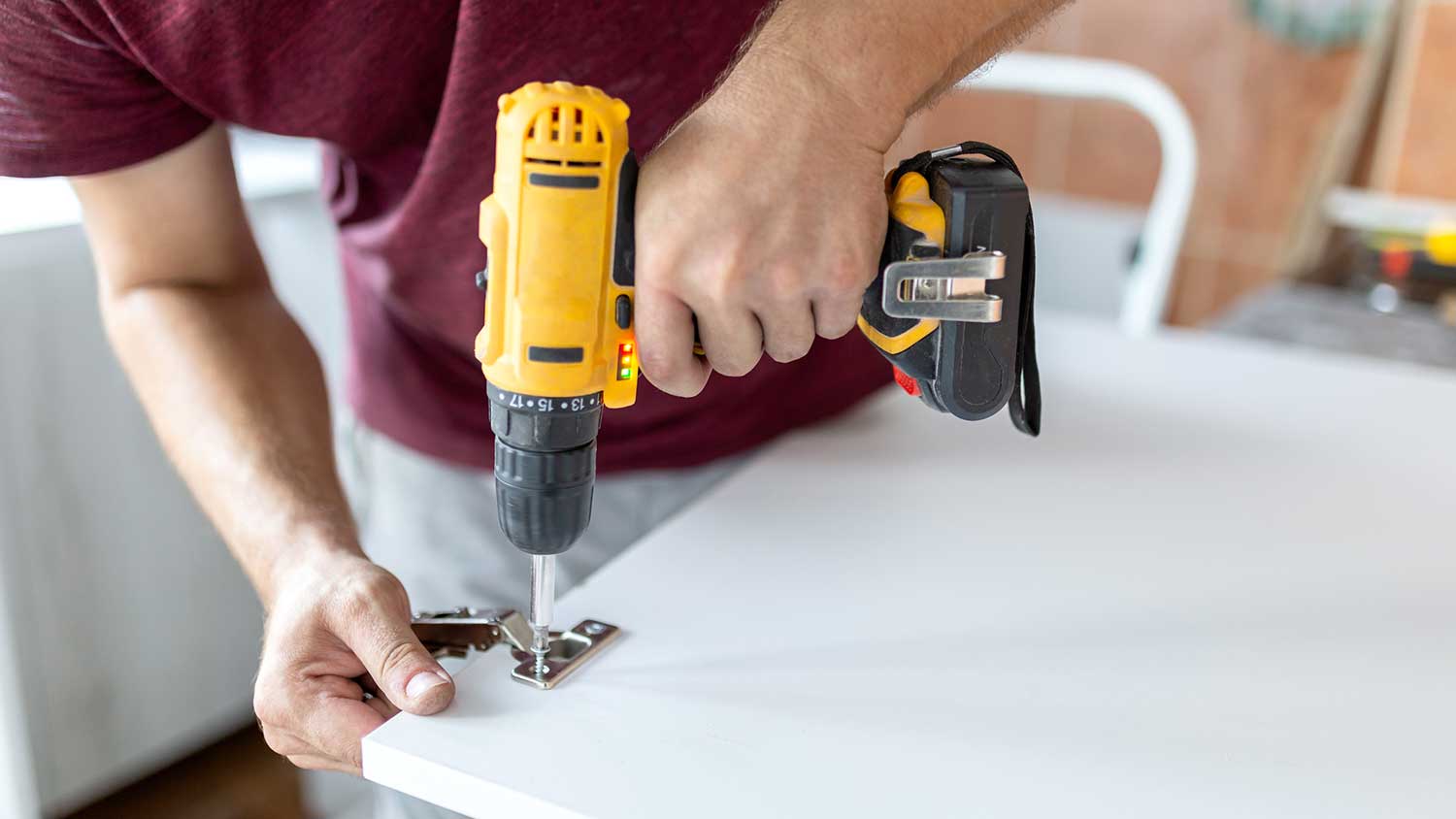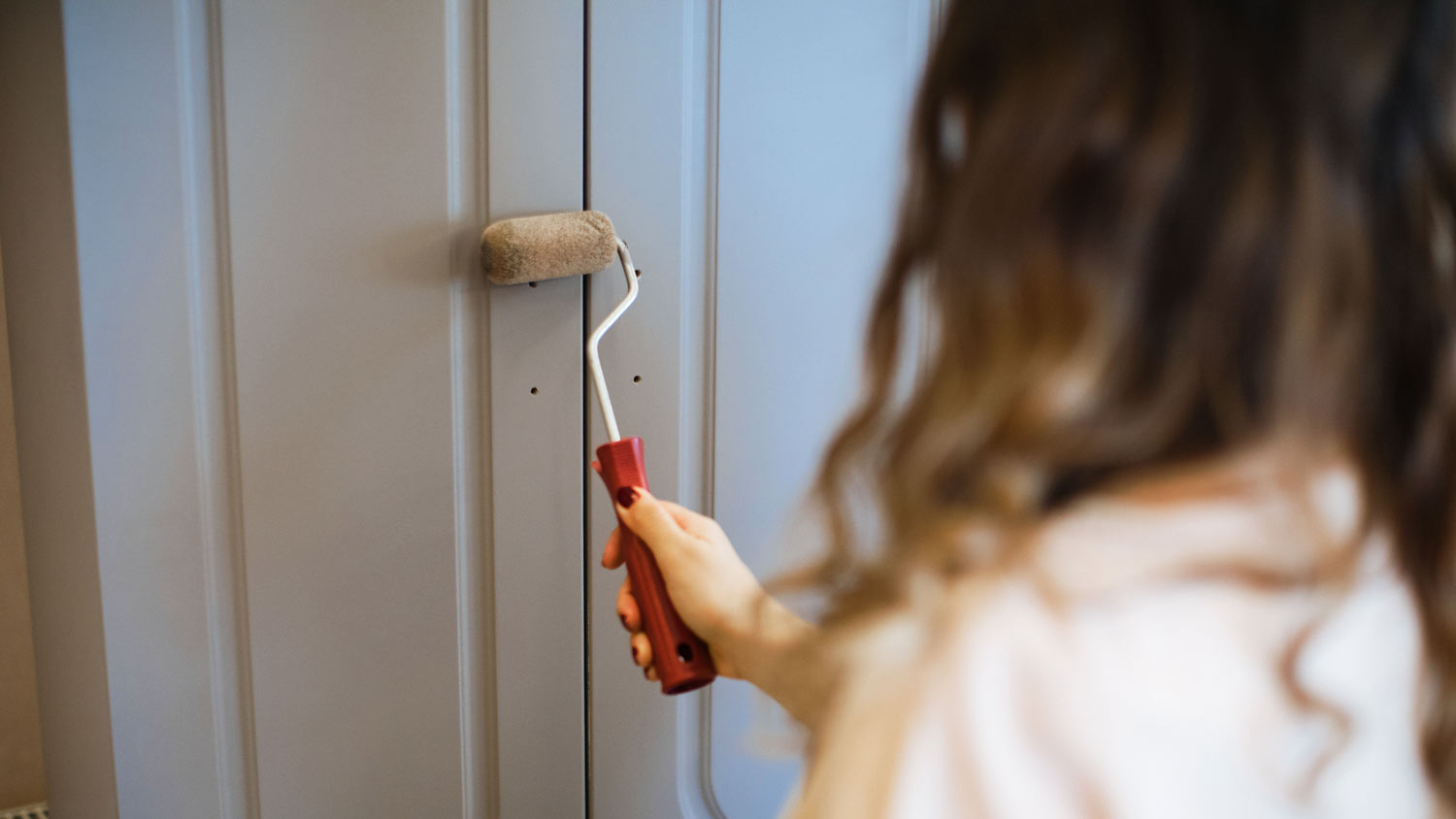
Is it time for new cabinet doors in your kitchen? Let’s explore the costs of new cabinet doors so you know exactly what to expect.
You can swing these simple fixes


Cabinet doors that open too far can strike walls, other cabinets, or appliances, potentially causing damage.
Cabinet repair costs $280 on average, but a pro only charges between $30 and $80 to fix a hinge.
There are several methods that can stop a cabinet door from opening too far, and a cabinet repair pro will know which is best for your home.
Do you have a cabinet door that bangs into something every time it’s opened? Doors that overextend beyond a 90-degree angle can strike walls, other cabinets, and of course you, potentially causing damage (and bruises). Fortunately, there are easy ways to fix the problem. Our guide will show you how to stop cabinet doors from opening too far.
Hinge restrictors are sturdy plastic guards that clip directly onto your cabinet hinges and prevent them from opening too far, generally capping them at 86-90 degrees. They’re effective, very affordable (around $5 to $10 for a pack), and nearly invisible once installed, so we recommend starting with this option.
You can find angle restrictors from several brands, including KraftMaid, Ravinte, Impresa, and others. But the trick is finding the precise type of restrictor that will work with your cabinet hinges. The best approach is to find the manufacturer of your cabinet hardware and look up their product catalog to order angle restrictors from them directly.
If you don’t know who made your cabinet hardware, check the packaging of the hinge restrictor clips for guidance. Manufacturers will typically list in the product descriptions which hinges their restrictors work with. Others may also give precise measurements so you can double-check that they’ll fit.
If you can’t find hinge restrictors that fit your cabinets, think about installing cabinet door bumpers instead. These work like a (much smaller) doorstop: With a single nail, screw, or adhesive strip, you place them on a wall or baseboard that’s lined up with the offending cabinet door’s corner or handle. When the door bangs into the bumper, both sides are saved from damage.
Cabinet door bumpers are affordable, usually around $10 to $15 for a pack, and many come in clear designs so they won’t be too visible. However, door bumpers don’t work everywhere; they aren’t a good option if your cabinet door is banging into another cabinet door or an appliance, for example.
A restraint wire is a high-strength wire with metal rings on both ends that are large enough to fit a screw into. You screw one end into the cabinet frame near a hinge and the other end into the inside of the cabinet door. As the door opens, the restraint wire tenses and keeps the door from opening too far.
Restraint wires are affordable, usually around $10 for a pack, and they typically come with their own screws. But they can get in the way, especially when used on base cabinets, where they can pose problems for unexpecting ankles or knees. If you’re already short on space, they may not be the best solution.
Many cabinet hinges—particularly customizable European-style concealed ones—allow you to adjust a cabinet door’s position in multiple directions, including the height. If only the top or bottom parts of the door are smacking into obstructions and the difference is only a fraction of an inch, you may be able to fix the problem by changing the door height.
Look at the inner hinges of your cabinet doors. If they have a panel with two additional screws, one higher and one lower than the main bar, those are likely screws that control the door’s height. Using the appropriate screwdriver, loosen these screws on both hinges until you can shift the height of the door. Once you like how the door is positioned, check that it’s level and then tighten the screws to hold the door in place.

A cabinet door swinging too freely is often a sign of a damaged hinge or one that needs replacing. There are many types of cabinet hinges, but if you have exposed or semi-concealed hinges that you can see when you open the doors, you can probably replace them with hinges that have similar dimensions. Look for soft-close hinges from the same manufacturer at the same size that are designed to stop doors from opening too wide.
If your cabinets use concealed hinges, replacing them becomes a more difficult DIY project, and sometimes a drill press or other specialized tools are necessary. You may also need to fill and paint over holes if you’re changing hinge types. In these cases, it might make sense to hire a cabinet repair company near you. If you do the work yourself, always measure carefully before you make any changes, and level your doors accurately.

If your cabinet door is in an awkward position, switching the direction in which it opens could solve the problem. Many common cabinets from popular brands like IKEA have doors that can swing either way. With a drill and a screwdriver, you can detach a cabinet door, unscrew the hinges, flip the door over, and install the hinges and door on the opposite side so it swings the other way.
Keep in mind that you may have to switch the handle or knob as well, which means your door will be marred with unsightly drill holes until you can patch and paint or stain the door. And certain cabinet doors, especially those installed in pairs, don’t have the option to swing in different directions, so it’s not a one-size-fits-all solution.
The responses of 10,400 Angi customers reveal that doors and hinges are among the most common cabinet repairs. Specifically, 21% of repair requests are for doors, and 18% are for hinges, highlighting the importance of regular upkeep and selecting quality hardware to keep cabinets in good working order.
It went fabulous actually! Was very pleased with the services rendered through Atlanta Studio 12 with my video. Read a lot of reviews online before making my choice and these guys really seemed genuine and authentic in their love for music. Not to mention had a really cool recording studio...
From average costs to expert advice, get all the answers you need to get your job done.

Is it time for new cabinet doors in your kitchen? Let’s explore the costs of new cabinet doors so you know exactly what to expect.

When refinishing your cabinets, you’ll need to consider the condition of your cabinets, budget, color, and stain preference. Find the cost to refinish cabinets in this guide.

Discover the cost to paint kitchen cabinets, including average prices, cost factors, and tips to help you budget and save on your next kitchen update.

If you are wondering who to hire to build custom cabinets, we have your back with these recommendations. Each pro will ensure a job is done right.

Getting stunning glass cabinets doesn’t have to be complicated. Use this guide for seamless cabinet door glass insert installation.

Thinking about adding toppers to your kitchen cabinets for additional storage space? Check out our guide with multiple ways to make it happen.